
| THE STRUCTURE AFTER 1371 |

The structure of the Rocca di Pierle after 1371

This page presents a probable reconstruction of the Rocca di Pierle after the rebuilding in 1371. The three-dimensional representation, which facilitates the explanation, was produced by the site's curator. For more information see the info page.

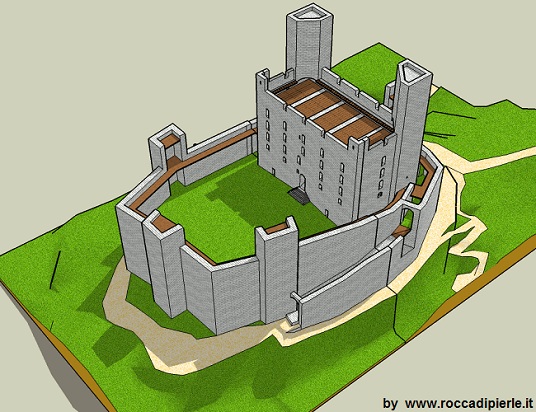
The fortress, as we know it today, was built starting from 1371, on top of an older building which has been witnessed since the eleventh century. The current structure was built by Francesco Casali on the instructions of his son Raniero, knight of Rhodes. The intentions of the Casali were to build a safe refuge, able to withstand both the siege by enemy armies, and the peasant revolts as had already occurred in Mercatale in 1369.
With the experience acquired as knight of Rhodes, Raniero Casali conceived an impregnable fortress. The defense systems of which we have testimony in Pierle made the fortress safe until the advent of gunpowder, which decreed its end.

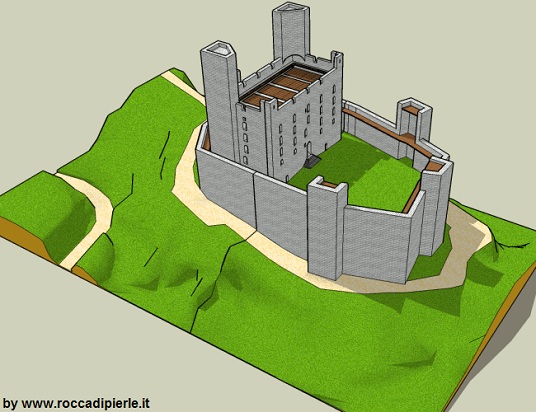
The fortress was impregnable because it was conceived to defend itself in different ways. The first defense was the position of the fortress. The rocky spur on which the castle rests dominates the Mercatale valley and provides an excellent lookout point. This condition allowed a good control of the territory and made it difficult to implement surprise attacks.
Furthermore, the land near the castle is steep in three out of four directions. This latter fact prevented the fortress from undergoing mass attacks by enemy armies that would not have found a place at the foot of the walls.

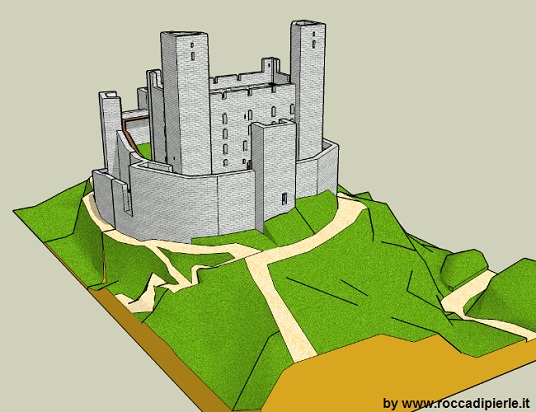
The second defense consisted of the mighty surrounding walls. They overlooked the road below by several meters and were strengthened by four wall towers (.... which are improperly called turrets, so as not to confuse them with the two main ones of the keep). Anyone wishing to enter the fortress, to reach the only entrance on the north-east side, would have had to follow a path that skirts the walls of the fortress, passing in front of all four defensive turrets. soldiers who found a place in the walkway that entirely follows the inside of the walls. The only non-steep side, the one defended by the North-West turret, was still constantly under fire from the two main towers.

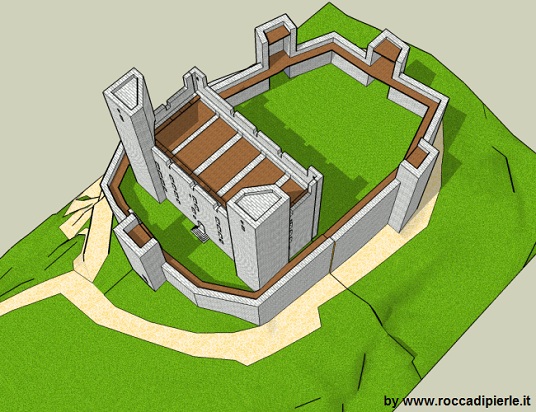
The historic entrance to the fortress was defended by a very effective system. To enter the walls it was necessary to go up a ramp and pass a drawbridge as already explained in the description page of the fortress. This led to the small courtyard. At this point, however, the fortress had not yet been conquered. However, the small courtyard remained under the title of the two main towers. The closed gate of the keep precluded the entrance and to reach the large courtyard it was necessary to go through the narrow passage under the west tower.

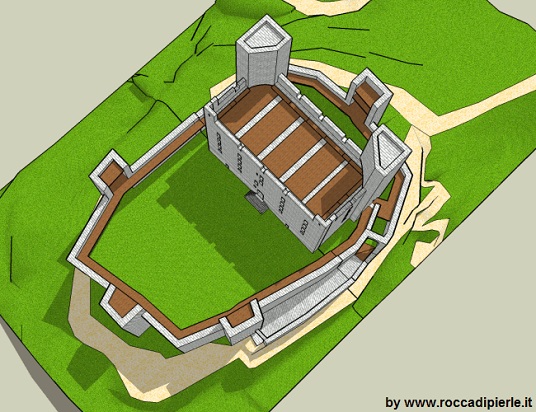
After reaching the courtyards, Taking the male was another no small feat. It had only two entrances, one to the South and one to the North. They were closed with two double doors, protected in the center by machicolations. If the first door was passed, the second was protected from the boiling fluids that precipitated from the machicolation above positioned between the two doors.
Overcoming the double doors guaranteed access exclusively to the ground floor of the keep. To go up to the next floors there were probably only ladders as there are no remains of stone stairs inside the keep. Only in the upper part and in the towers were there stone stairways, used in the posterns built inside the walls.
In the small rooms inside the two towers, with enough provisions, the lords of the castle could have resisted for weeks even if the besiegers had taken the rest of the fortress.


Last update 21/02/2021
|

